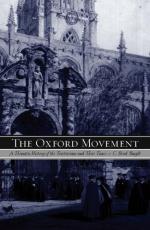But these things were of gradual growth. Towards the end of 1834 a question appeared in Oxford interesting to numbers besides Mr. Newman and his friends, which was to lead to momentous consequences. The old, crude ideas of change in the Church had come to appear, even to their advocates, for the present impracticable, and there was no more talk for a long time of schemes which had been in favour two years before. The ground was changed, and a point was now brought forward on the Liberal side, for which a good deal might be plausibly said. This was the requirement of subscription to the Thirty-nine Articles from young men at matriculation; and a strong pamphlet advocating its abolition, with the express purpose of admitting Dissenters, was published by Dr. Hampden, the Bampton Lecturer of two years before.
Oxford had always been one of the great schools of the Church. Its traditions, its tone, its customs, its rules, all expressed or presumed the closest attachment to that way of religion which was specially identified with the Church, in its doctrinal and historical aspect. Oxford was emphatically definite, dogmatic, orthodox, compared even with Cambridge, which had largely favoured the Evangelical school, and had leanings to Liberalism. Oxford, unlike Cambridge, gave notice of its attitude by requiring every one who matriculated to subscribe the Thirty-nine Articles: the theory of its Tutorial system, of its lectures and examinations, implied what of late years in the better colleges, though certainly not everywhere, had been realised in fact—a considerable amount of religious and theological teaching. And whatever might have been said originally of the lay character of the University, the colleges, which had become coextensive with the University, were for the most part, in the intention of their founders, meant to educate and support theological students on their foundations for the service of the Church. It became in time the fashion to call them lay institutions: legally they may have been so, but judged by their statutes, they were nearly all of them as ecclesiastical as the Chapter of a Cathedral. And Oxford was the fulcrum from which the theological revival hoped to move the Church. It was therefore a shock and a challenge of no light kind, when not merely the proposal was made to abolish the matriculation subscription with the express object of attracting Dissenters, and to get Parliament to force the change on the University if the University resisted, but




